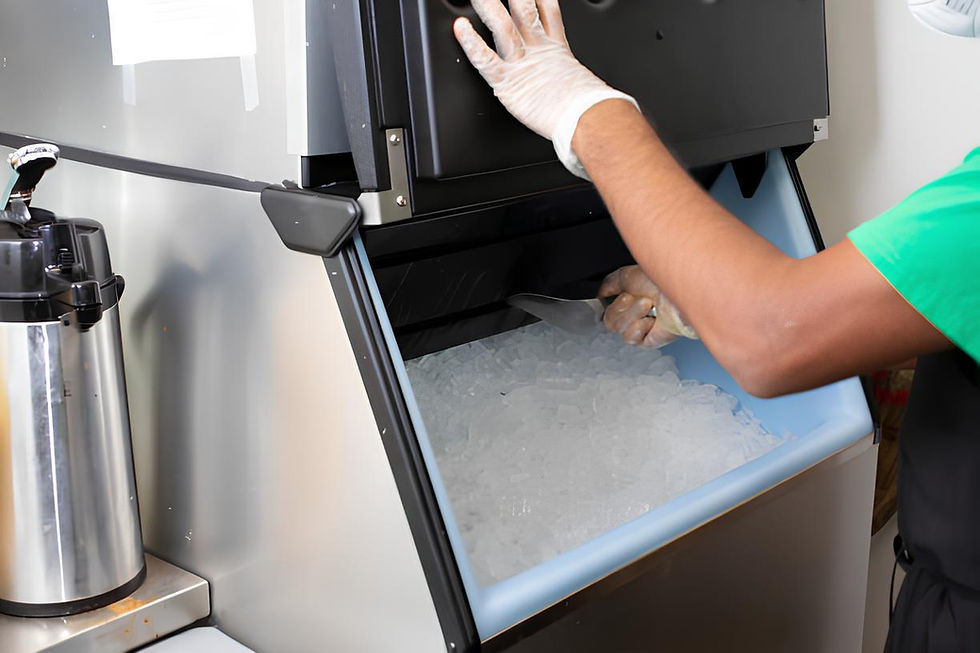The $50M Mistake Most Beverage Distributors Make (And How to Avoid It)
- Alberto Silva

- Sep 4
- 4 min read

Why treating every restaurant like a supermarket is killing your margins—and what savvy Bay Area operators do instead
Last month, three different restaurant owners in Oakland told me the same story: their beverage distributor promised craft sodas that would "fly off the shelf," delivered cases of products that sat untouched for weeks, then blamed the restaurant for "poor marketing."
Sound familiar? This scenario costs Bay Area distributors an estimated $50 million annually in returned inventory, lost relationships, and missed opportunities. The mistake? Treating every food service client like they have the same needs, storage capacity, and customer base as a Safeway.
The One-Size-Fits-None Problem
Most distributors operate with a supermarket mindset: push volume, stock deep, and let customers figure out what sells. But your local café doesn't have a warehouse. Your neighborhood Vietnamese restaurant can't dedicate half their cooler to beverages. Your artisanal sandwich shop needs products that match their $14 sandwich, not $2.99 convenience store drinks.
The reality: A typical Bay Area restaurant has 15-20 square feet of beverage storage. Grocery chains have 500-2,000 square feet. Yet most distributors pitch the same 48-case minimums to both.
What Actually Works: The Alameda Soda Co. Approach
Take Alameda Soda Co., a small craft beverage maker that's managed to secure premium placement in dozens of Bay Area cafés and restaurants. Instead of competing on volume, they focus on three things most distributors ignore:
1. Right-Sizing for Real Kitchens
Rather than demanding case minimums, Alameda Soda Co. works with restaurants to determine the perfect mix. A busy Castro café might move 10 cases of slim cans of their Hangar25 craft Cola weekly, while a Nob Hill wine bar only needs 4 cases, but wants three different flavors.
2. Matching Products to Profit Margins
Alameda Soda Co. doesn't just ask "what sells?" They ask "what makes you money?" Their sodas cost restaurants $2.50 per can/bottle but sell for $4.50—a 44% margin compared to 15-20% on mainstream sodas.
For restaurants already operating on 3-5% net margins, that difference is the difference between profit and loss on beverages.
3. Training Staff, Not Just Stocking Shelves
When Alameda introduces a new flavor, they don't just drop off cases. They spend 20 minutes with the serving staff explaining the flavor profile, suggesting food pairings, and giving everyone a sample. Result? Staff actually recommend the drinks instead of defaulting to "Coke or Pepsi?"
The Hidden Costs of Getting This Wrong
When bev distributors push inappropriate products or minimums:
Restaurants tie up cash in slow-moving inventory (the average Bay Area restaurant operates on 14 days cash flow)
Storage becomes a nightmare (forcing owners to choose between ingredients and beverages)
Staff resistance grows (nobody wants to sell products they don't understand or believe in)
Trust erodes (leading to shorter contracts and constant price shopping)
Real example: A Fremont sandwich shop told me they stopped carrying craft sodas entirely after their distributor insisted on 6-case minimums of a product that took 3 months to move. They lost $400 in spoiled inventory and went back to basic fountain drinks.
What Café, Restaurant, and Market Owners Should Demand
From Your Distributor:
Flexible minimums based on your actual storage and sales velocity
Margin analysis showing your actual profit per product, not just cost
Staff training on new products (15-minute sessions can double sales)
Trial periods for new products without massive upfront commitments
Quick rotation of slow movers before they become dead inventory
From Yourself:
Track beverage margins separately from food (most operators don't)
Calculate storage cost per square foot and factor it into product decisions
Survey your customers instead of guessing what they want
Train your team to upsell beverages that actually complement your food
The Bay Area Advantage: Why Local Matters
The Bay Area's food culture creates unique opportunities for distributors who understand the market:
Higher price tolerance for quality products (customers paying $16 for avocado toast will pay $5 for craft soda)
Sustainability focus (compostable packaging and local sourcing matter here)
Cultural diversity (opportunity for specialty beverages that match cuisine types)
Innovation appetite (customers actively seek new experiences)
But only if you approach each account as a unique business, not just another stop on your delivery route.
Making the Switch: A 30-Day Action Plan
Week 1: Audit your current beverage program
Calculate actual margins per product
Measure storage space dedicated to beverages
Track which products turn fastest
Week 2: Find distributors who think like partners
Ask about flexible minimums
Request margin analysis, not just wholesale pricing
Inquire about staff training programs
Week 3: Test selectively
Try 2-3 premium options alongside basics
Train staff on the new products
Track sales and customer feedback
Week 4: Optimize and expand
Double down on winners
Eliminate slow movers quickly
Negotiate ongoing terms based on actual performance
The Bottom Line
The $50 million mistake isn't about choosing the wrong products. It's about distributors treating restaurants like they're grocery stores, and restaurant owners accepting it.
In a region where a sandwich costs $14 and customers happily pay $6 for coffee, your beverage program should be generating serious profit, not just taking up cooler space.
The distributors and operators who figure this out aren't just avoiding the mistake—they're turning beverages from a necessary evil into a profit center.
Ready to audit your beverage program? Start by calculating your actual margin per product and storage cost per square foot. The results might surprise you.
What's your biggest beverage distribution challenge? Share your experience with the Bay Area food service community and let's solve these problems together.




Comments